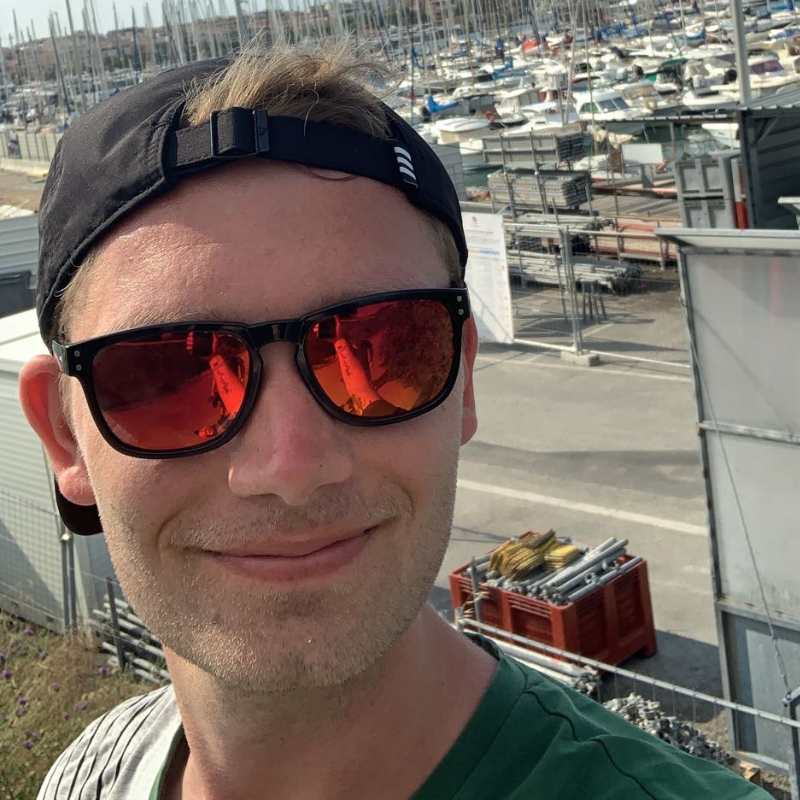Barcelona is one of those cities that manages to feel both laid-back and full of life. You’ve probably already seen the photos: colorful buildings, narrow streets, beaches, and Gaudí architecture that doesn’t look like anything else in Europe.
But what’s the best way to actually experience the city? That’s where a bit of planning can make all the difference.
This blog post is for anyone looking to make the most of their barcelona travel without spending a fortune or wasting time on things that aren’t worth it. Whether it’s your first time in the city or you’ve been before, this guide brings everything together in one place.
I’ve already written several in-depth posts on specific parts of the Barcelona experience – like what to see, when to go, how to travel on a budget, and more. This post ties it all together. You’ll find clear tips, simple explanations, and helpful links to dig deeper when you need it.
We’ll go through where to stay, how to get around, what to see (and what you can skip), the best times to visit, and how to combine everything into a five-day plan that actually works. No fluff. Just the stuff you need to enjoy your barcelona travel in a way that fits your style and your budget.
If you’ve been searching for a complete and realistic barcelona travel guide, this is it.
Table of Contents
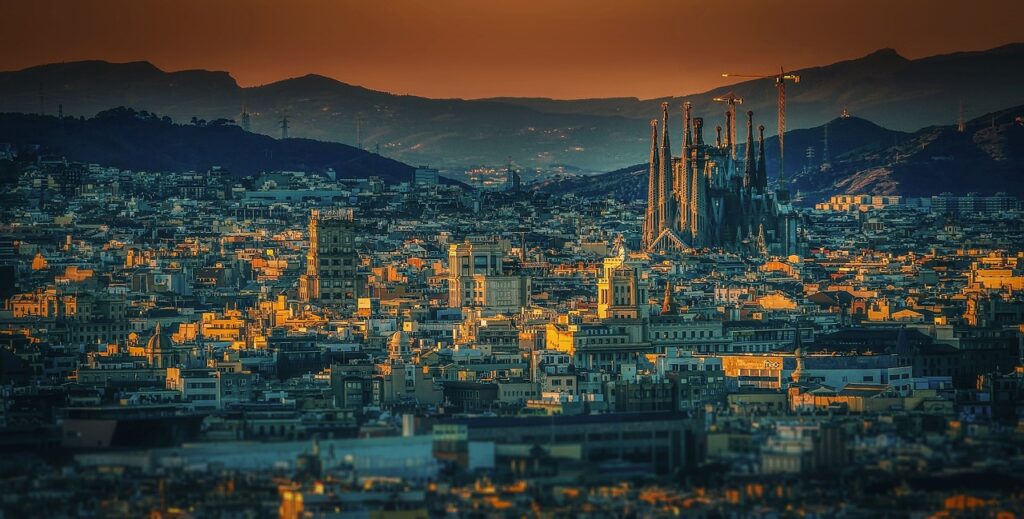
First Time in Barcelona? Start Here
Barcelona is the kind of place where it’s easy to get around — once you know how. But if it’s your first visit, there are a few things that are just good to know before you land.
Let’s start with where to stay.
The Gothic Quarter looks great in photos, and yeah, it’s close to a lot of things. But it can get loud. And packed. If you’re someone who needs quiet in the evening, you might want to skip it.
Gràcia feels like a different city. It’s calmer, more local, and a bit further out — but still easy to reach by metro. El Born is a good middle option. Not too touristy, but still central.
Barceloneta has the beach, but the rooms are small and not cheap. Sometimes, staying just outside the city center makes more sense. You get better prices, and the metro connects it all. For anyone planning a longer barcelona travel stay, that can really help with the budget.
Now — transport. Use the metro. It’s clean, quick, and easy. Buy a 10-ride ticket (called T-casual) instead of paying one trip at a time. It works on buses too, but the metro’s faster.
Avoid walking everywhere. It looks walkable on a map, but some spots are farther apart than you think. Save your feet when you can — you’ll need them for the rest of your barcelona travel days.
Oh, and be careful with your stuff. Pickpockets are fast, especially around La Rambla and on the metro. Keep your bag in front, and don’t leave your phone on the table when you’re eating. This is one of the most important things to know before starting your barcelona travel adventure.
Also — skip the restaurants right on the main tourist streets. Walk a few blocks away, and you’ll find better food for less. It’s a small tip, but it makes a big difference during a week of barcelona travel.
If you want to make the most of your time, a few smart decisions early on can shape the whole experience. That’s something I learned the hard way on my first barcelona travel trip. Hopefully, this helps you avoid the same mistakes.
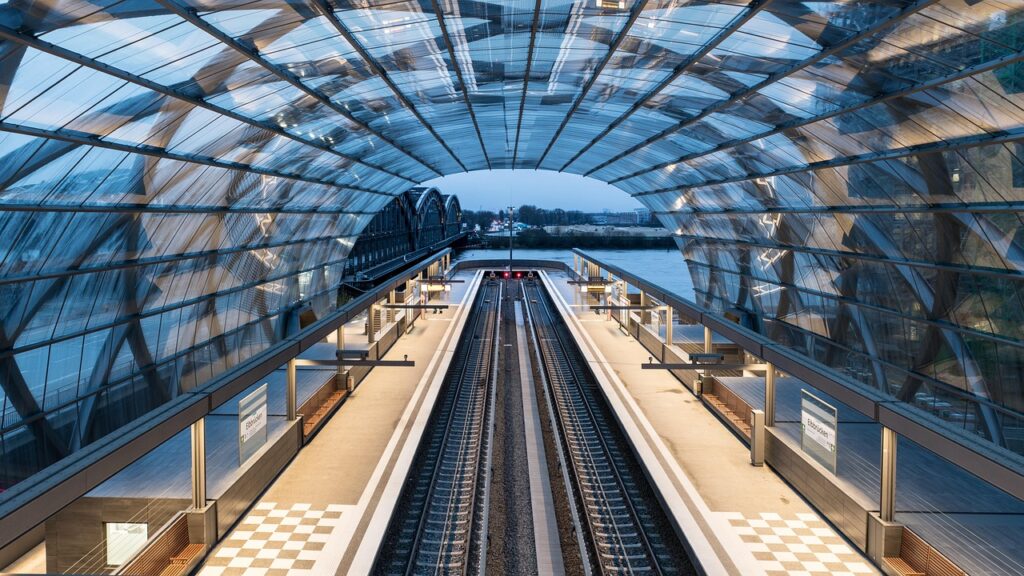
Must-See Tourist Attractions in Barcelona
You don’t need to see everything. But some places? They’re worth it. Even if you’re not into landmarks, a few stops are hard to ignore during any barcelona travel trip.
The Sagrada Família is one of them. You’ve seen photos, but in real life, it’s bigger. Stranger. Better. If you only do one major thing, make it this. Just book in advance — the line is long, and tickets go fast.
Best time to go? Early. That’s when the light hits the windows. It’s quieter too.
Then there’s Park Güell. Also by Gaudí, but not the same vibe. It’s more playful. There’s a paid section and a free area. The paid part has the famous view. Late afternoon is a good time. Fewer people. Softer light.
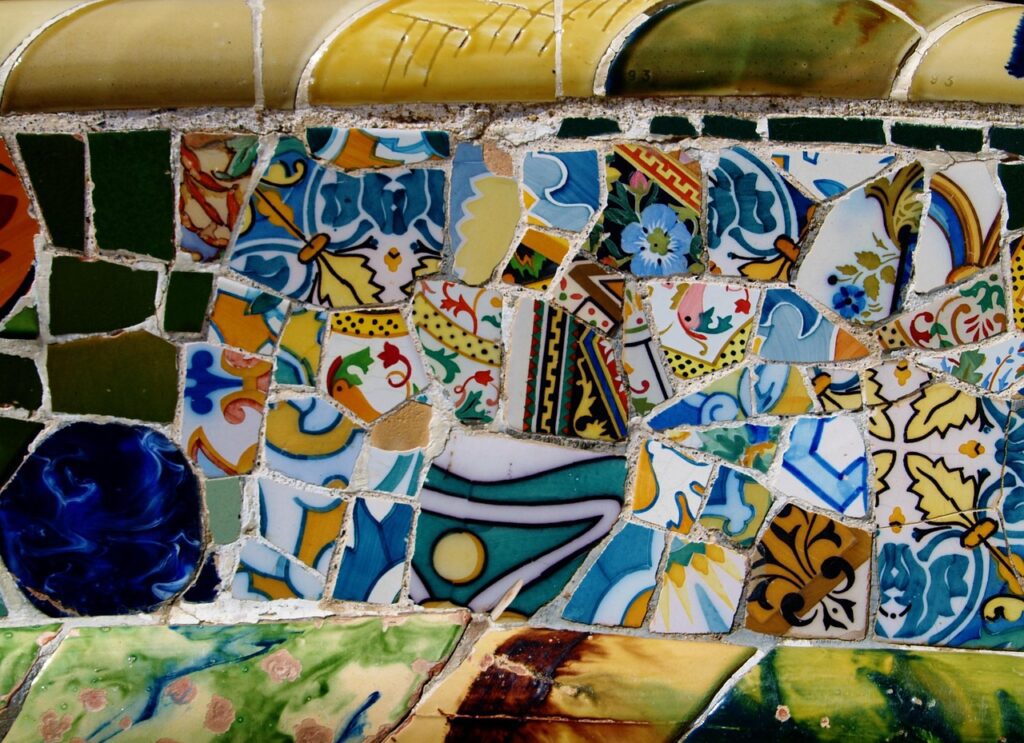
Montjuïc is different again. Less famous, but still a good break. You can take the funicular or cable car up. There’s a castle, a few museums, and a view of the port. Not everyone includes it, but it works well as a slow day during your barcelona travel week.
And the Gothic Quarter — yeah, it’s touristy. But it’s old, and walking around still feels special. Not every street is packed. Go early or late, and it’s quieter.
Some places will be busy no matter what. Doesn’t mean you shouldn’t go. Just plan a bit. Take breaks. Mix the big things with the quiet stuff.
There’s a full list of the big sights here if you want to dive deeper.
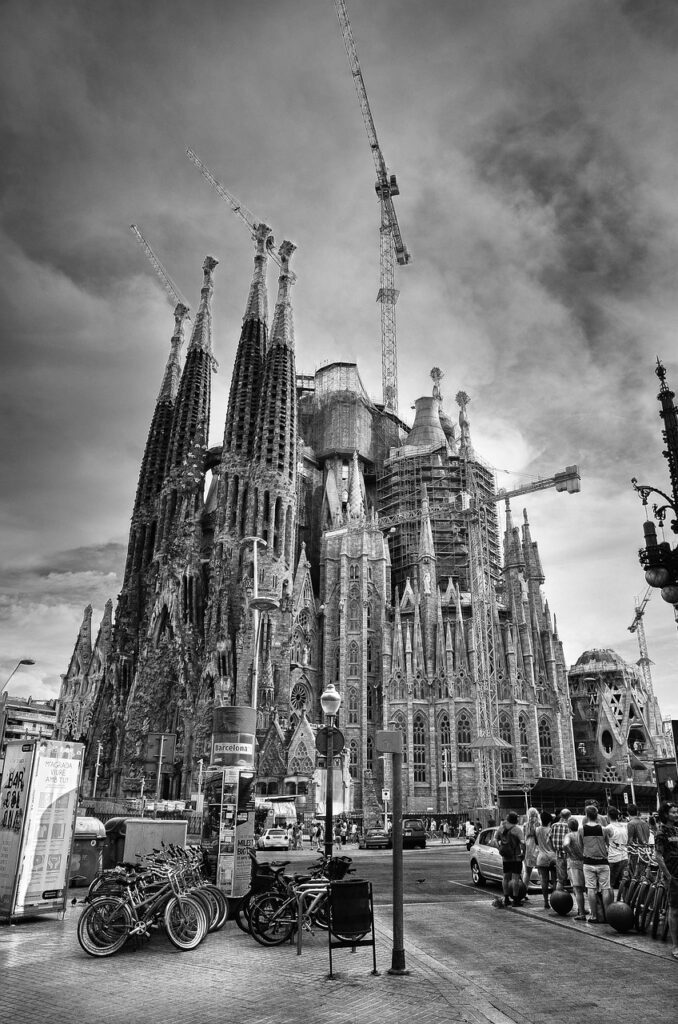
Not everything has to be famous. A lot of what makes barcelona travel feel different happens in the smaller places. Tiny streets. Sidewalk cafés. A square with one guy playing guitar. That sort of thing.
But if we’re still talking attractions, don’t skip the Boqueria Market. Yeah, it’s busy. But even locals shop there. Just avoid the first few stalls — prices drop as you move deeper in.
Casa Batlló and Casa Milà are two more Gaudí spots. You can pay to go inside, but honestly, the outside is enough for some people. Walk by, take a look, and decide from there. Not everything on your barcelona travel list has to be a full tour.
Plaça Reial is near La Rambla, and worth a quick stop. It’s more interesting at night. The bars there are hit or miss, but the square itself is nice. Some people go just to see the lamps. Gaudí again.
If you want something a little more hidden, try the Bunkers del Carmel. It used to be a secret. Now it’s on every list. But the view is still good, and it’s free. Go around sunset. Bring water. No café up there.
Last thing: don’t try to do it all in one go. That’s not how barcelona travel works best. One or two big things a day is plenty. Leave time to wander. Sit down. Eat something slow. Skip a few places, and you’ll enjoy the rest more.
It’s easy to get caught up in checking things off a list. But some of the best parts of barcelona travel are the ones you don’t plan. A street you didn’t mean to turn down. A café you found by accident. That’s where the city shows up.
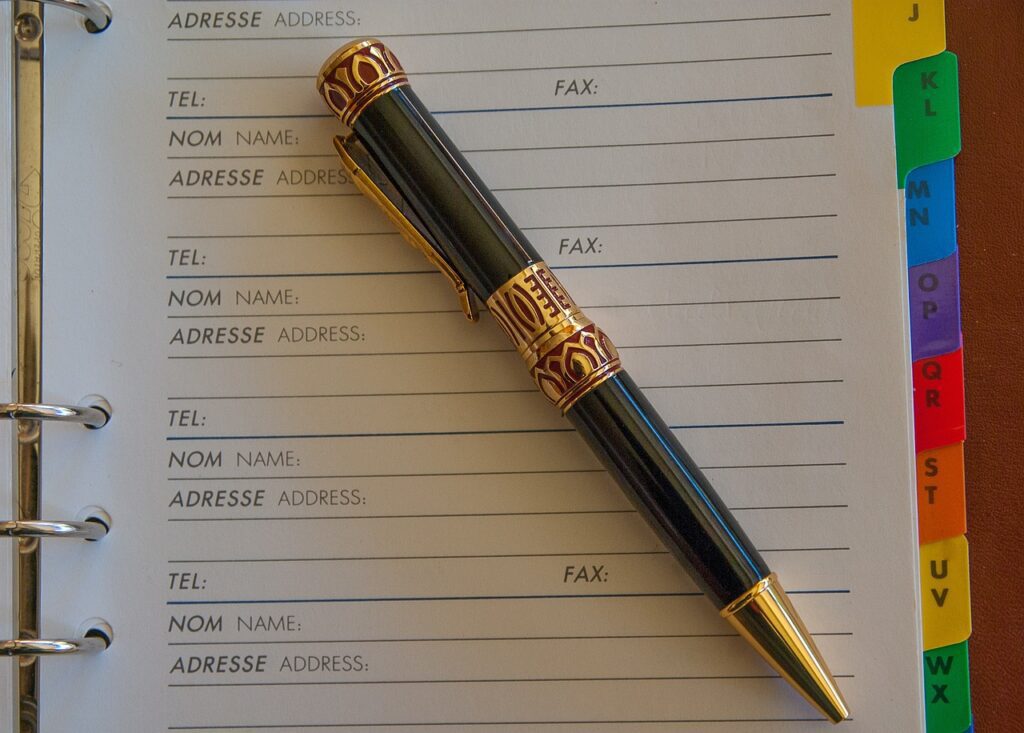
Plan Your Barcelona Vacation Without the Stress
Some trips are easy to plan. Barcelona looks like one of them, but it can get tricky. There’s just too much to do. And if you try to fit in everything, you’ll end up needing a vacation from your vacation.
It helps to know your pace. If you like slow mornings and quiet evenings, stay somewhere local — like Gràcia or Poble Sec. If you want to be close to everything, go for El Born. It’s not as loud as the Gothic Quarter, but still central. For the beach crowd, Barceloneta might sound perfect, but it’s not ideal for sleep or space.
Where you stay shapes the whole feel of your barcelona travel. A good neighborhood means shorter walks, better food, and less time on transport.
Now, when to go? Spring and early autumn are usually best. The weather is good, but the crowds are smaller. July and August are hot, full of tourists, and prices go up. If you want to save money and avoid the worst of the lines, skip those months.
Weekdays are better for sightseeing. Try to plan big things like museums or major sights on Tuesdays, Wednesdays, or Thursdays. Less busy. More time to actually enjoy it.
And don’t forget to leave space in your days. A packed schedule looks smart on paper, but it’s not how barcelona travel works in real life. The best moments often come when you’re not rushing. Sitting outside with a drink. Watching people walk by. Finding something you didn’t expect.
I’ve put together a full post on what to see, where to stay, and how to build the right kind of trip depending on your style plan your barcelona vacation.
If you’re only in the city for a few days, pick what matters most. Maybe it’s food. Maybe it’s art. Or just being near the sea. That makes a difference when planning your days.
A lot of first-time barcelona travel plans try to cram in everything. You don’t need to. One big thing in the morning, something lighter in the afternoon. That’s usually enough.
Let’s say you visit Park Güell early. After that, just walk through Gràcia. Stop somewhere for a snack. You’ll see more that way — and feel less rushed.
Food is part of the trip too. Don’t spend every meal sitting down. Try a bakery. A small market. Take things with you. That kind of mix makes a barcelona travel day feel more real.
Also, don’t worry if you don’t love every part of the city. Some areas feel overdone. Some places are too loud. That’s normal. Skip what doesn’t feel right, and do more of what does. That’s how most good barcelona travel stories start — by following what actually fits you.
Transport helps here. The metro is good, but don’t ignore the buses. They’re slower, but you see more. And some routes go through areas you might never walk through otherwise.
Try to give each day a little structure, but leave space around the edges. A plan is helpful, but flexibility makes it better.
If your idea of a perfect barcelona travel experience is walking with no real goal and finding a spot to sit for an hour, that counts too.
No trip is perfect. But if you’re not stressed, not rushing, and not stuck in tourist-only places — it’s usually a good one.
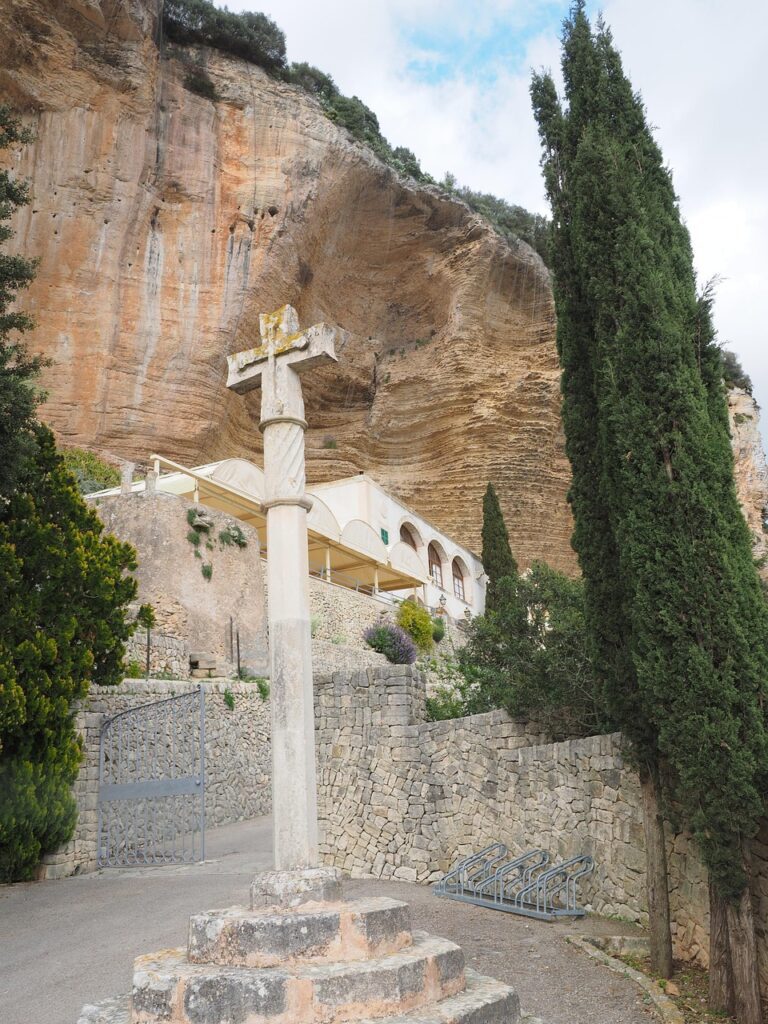
What to Expect When Visiting Barcelona in November
November in Barcelona doesn’t look like November in a lot of other European cities. No snow. No heavy jackets. And often, no crowds either.
The weather is mild. You might get a bit of rain here and there, but most days are clear. Around 16–18°C in the afternoon, cooler in the evening. A light jacket usually does the job.
If your barcelona travel plan lands in November, you’ll notice something right away — the city slows down a bit. You can actually walk around without bumping into people every five seconds.
Tourist spots are easier to enjoy. Lines are shorter. Tickets are easier to get. And it’s cheaper too. Flights, hotels, and even meals tend to cost less this time of year.
It’s not beach weather, but you can still walk along the water. Sit on a bench. Have coffee outside. Locals still do. Just bring a layer or two for the wind.
There are still things happening. Some small festivals. Food events. Art shows. The calendar is quieter, but not empty. If you’re into local culture, this month gives you more room to actually see it.
One thing to keep in mind — daylight fades earlier. That means shorter afternoons. If you’re planning any outdoor exploring, start earlier in the day.
November fits best for slower barcelona travel. It’s not for people chasing sun and beach clubs. But if you like cafés, quiet streets, and the kind of atmosphere where you can breathe a bit — this is a good time.
What to Expect When Visiting Barcelona in November
Packing for November is easier than it sounds. You don’t need heavy gear. Bring one jacket, some layers, and shoes you can walk in. That’s it. Umbrella? Maybe — but not always needed. A scarf is nice to have in the evenings.
For anyone planning their first barcelona travel experience in the off-season, this month is a smart choice. You avoid the long lines, the high prices, and the heat. And you get to see the city in a more relaxed way.
You’ll notice locals doing more of the same things tourists do in summer. Sitting outside. Meeting in plazas. Going to museums. The only difference is the pace. It’s calmer. More normal.
Restaurants still serve outside. Just with heaters. The food doesn’t change. You can still get grilled fish, pan con tomate, or a glass of cava with lunch. You just won’t need to book a table days in advance.
Shops start putting up holiday lights near the end of the month. Streets like Passeig de Gràcia begin to feel festive. It’s not full-on Christmas yet, but you can see it coming. If your barcelona travel overlaps with late November, you might catch the start of it.
It’s not perfect, of course. Some days are grey. Some museums close earlier. And if you like nightlife, it’s a little quieter. But for everything else, November does more right than wrong.
It’s a good time for walking, for watching, for slowing down. That’s what makes barcelona travel in November feel different. Less rush, more space. The kind of trip where you don’t need a checklist — just a good pair of shoes and a few ideas.
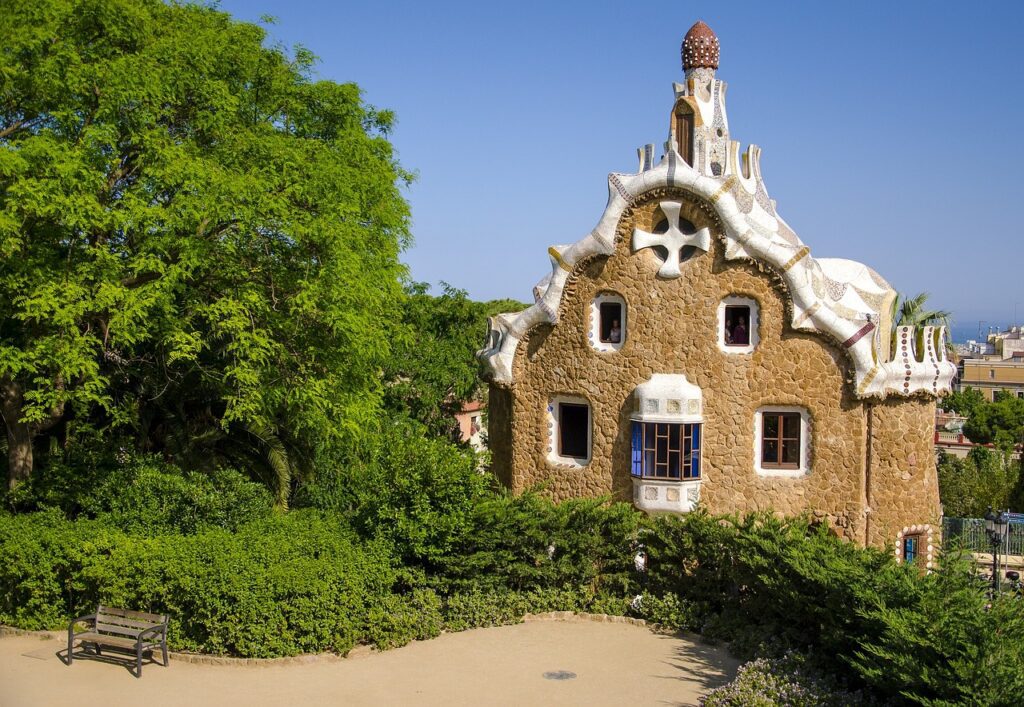
Explore the Artsy Side – Dalí & More
You don’t need to know much about art to enjoy it here. That’s what makes it easy. Some museums are small, some are strange, but most of them are worth a visit.
The Dalí Theatre-Museum isn’t in the center. It’s in Figueres. You’ll need a train, and it takes a little over an hour. But the place is hard to forget. The outside looks like something from a movie. Inside, it’s even more bizarre.
There are paintings, yes, but also sculptures, mirrors, odd furniture. It feels more like a trip through someone’s mind than a normal gallery. Give yourself enough time — it’s not the kind of place you want to rush.
This is one of the best options for a day out, especially if your barcelona travel includes a mix of classic sights and something different.
Back in the city, the Picasso Museum is easier to fit in. Smaller. Quieter. A lot of the work is from his early years — sketches, studies, things that show how he started. That’s what makes it stand out.
Go early if you can. It fills up fast, even outside summer.
The area around it — El Born — is worth a slow walk. It’s not far from the old city, but it feels different. Less noise. A few good spots to eat. It fits well into any barcelona travel plan that includes culture without turning it into a full day.
If you’re more into modern stuff, head to MACBA. The museum’s in Raval. Big, white building. Inside, there’s a lot of space and not too much noise. The art? Some of it makes sense. Some of it doesn’t. But it’s never boring.
You’ll see skaters out front most days. That square is one of the best-known skate spots in Europe. Even if you skip the museum, it’s a fun place to stop. Watch for five minutes. You’ll get why it works.
Then there’s the Miró museum. It’s up near Montjuïc. The style’s lighter. More color. Simpler shapes. Not as heavy as some of the other stuff. The museum’s quiet, and the hill it sits on has a good view. Worth the trip if you’ve got a free morning.
You don’t need to hit all the museums. One is enough. Maybe two. No one says a full barcelona travel day has to be about art. But adding just a little makes the whole trip feel deeper.
Pick one. Go slow. Then do something else.
If you’re curious about how to get to the Dalí Museum, what it costs, or when to go, I’ve written more about that in this post about the Dalí Museum experience.
Art doesn’t need a full plan. But if you’re open to it, it fits in — without taking over your barcelona travel.
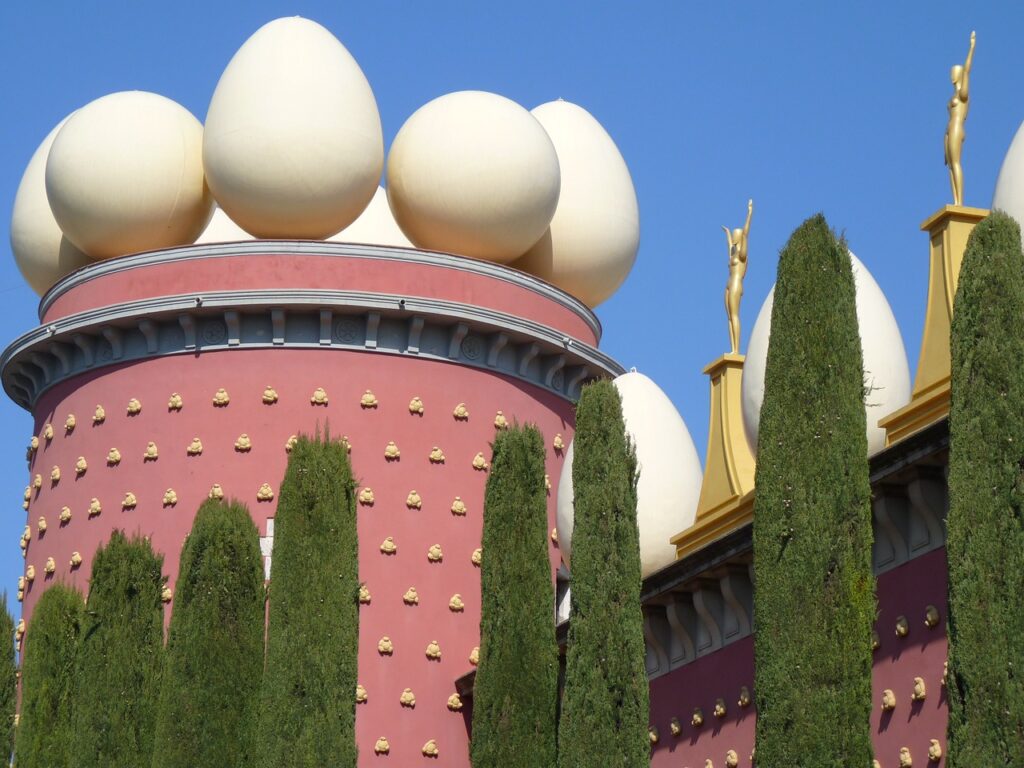
My 5-Day Ideal Barcelona Travel Route
You can plan a trip in a hundred different ways. But here’s how I’d do it — five days in Barcelona, no rush, no pressure, just a balance of big sights and quieter moments.
Day 1: Old Town + the sea
Start in the Gothic Quarter. Walk. Don’t rush it. Let the streets take you wherever. Stop at Plaça Reial. Go into the cathedral if it’s open. Have a coffee somewhere small. The point here is to settle in.
After lunch, walk down to the harbor. Keep going toward Barceloneta. Sit near the water for a while. People-watch. Take it slow.
Why you should visit:
✅ Easy intro to the city
✅ Great mix of history and sea views
✅ No tight schedule — just walk and look
Day 2: Gaudí day
Morning: Sagrada Família. Book early, and go right when it opens. You’ll get better light and fewer people.
Midday: quick bite somewhere nearby.
Afternoon: Park Güell. It’s not close, so plan your timing. You’ll need a bit of energy for the hills.
Dinner in Gràcia if you still have it in you. The square near Plaça del Sol is usually full of people — but not in a touristy way.
Day 3: Montjuïc + museums
Take the funicular from Paral·lel. It’s quick, and you skip the steep walk. At the top, start with the castle. The view of the port is one of the best in the city. If it’s open, walk along the walls. Not many people do.
After that, head toward the Joan Miró museum or one of the gardens nearby. The cactus garden is quiet and has a different kind of beauty. Good place to take a break.
In the afternoon, walk or take the cable car down. If you want something sweet, the area near Poble Sec has bakeries that sell xuixos — sugar-coated pastry with custard inside. Not famous, just good.
Why you should visit:
✅ A slower day with space to breathe
✅ Panoramic views and less crowded spots
✅ A good balance between nature and culture
Day 4: El Born + Picasso + tapas
Start the day in El Born. It’s one of those areas that feels different depending on the time. Morning is best. Fewer people. The shops are just opening. There’s a calmness to it.
Visit the Picasso Museum if you didn’t earlier. It doesn’t take all day. Afterward, stop by Santa Maria del Mar — a large Gothic church nearby. Free to enter, and the light inside changes depending on the hour.
Lunch? Pintxos. There are a few casual bars in the area where you pay by the toothpick. Not fancy. Just fast, simple, and tasty.
Afternoon: walk through Parc de la Ciutadella. Bring a snack. Sit near the lake. You don’t have to do much here. It’s just a nice spot to rest your legs.

Day 5: Slow streets, no plans
By now, you’ve seen the big things. So don’t plan too much for this one.
Start slow. Gràcia works well for that. It’s not central, not busy. Just a normal part of town where people live.
Find a café near one of the small squares. Order something simple. Toast, maybe. Coffee. Sit down. Watch.
This isn’t about checking anything off. It’s more about feeling the place without trying too hard.
After that, walk a bit. Some of the streets go nowhere. Some open into little parks. You’ll probably end up somewhere you didn’t mean to be. That’s fine.
In the afternoon, go up to the Bunkers. You’ve heard of it. Everyone has. But it still works. Still feels good to be up there.
Bring water. Maybe some food. Don’t expect much around it — no shops, no café.
The view? Still great. Especially at the end of the day. You’ll see the whole city, lights coming on, everything slowing down. No tour guide needed.
Most people just sit. Some talk. Some don’t. That’s all it is.
When you head down again, the week feels done. Not rushed. Not forced. Just full in the right way.
Final Tips: Save Money, Avoid Traps & Have Fun
Food is one place where it’s easy to spend too much. Especially if you eat out all the time. You don’t have to.
In the morning, grab something from a bakery. Most have coffee and small sandwiches. Toast with tomato is common. It’s cheap and fills you up. You’ll see locals doing the same.
Lunch is the best value. Look for places with a set menu. It’s what people who live here order. Starter, main, and a drink — sometimes dessert too. You’ll pay less, and you eat better than most tourist spots.
Dinner? Walk away from the busy streets. Not far. Just a few blocks. That’s where the better stuff is. Less noise, more real food.
Don’t get stuck in tourist-heavy areas when you’re hungry. The prices go up fast. And the quality usually drops.
When it comes to sights, buy tickets online. Especially for the big things. It saves time, and sometimes a few euros. The lines aren’t fun. You can skip a lot of that with just a little planning.
Avoid those all-in-one city cards unless you know exactly what you’ll use. They sound smart, but most people don’t get the value out of them.
For getting around, don’t buy single tickets. The 10-ride pass is a better deal. And you can share it. Just scan twice if you’re two people. It works on both metro and bus.
Also — check your phone plan. Roaming can get expensive without warning. Some cafés have Wi-Fi, but not all. If you’re staying a week or more, a prepaid SIM might make sense.
Real-world budget tips that actually work
One thing that surprises a lot of people: the tap water is fine to drink. You don’t need to buy bottles all the time. Bring a refillable one. Most public fountains work.
Watch out for tourist menus in English with no prices. That’s never a good sign. If locals eat there, it’s usually written in Catalan or Spanish. Doesn’t mean you’re not welcome — just that it’s not built for tourists only.
Same goes for sangria. The places that push it hard are often the ones where it’s pre-mixed and full of sugar. Order wine, or go where locals go. You’ll get the real thing without paying extra for a pitcher full of ice.
When shopping, remember siesta is real — at least in some parts of the city. Small stores may close mid-afternoon. Big chains stay open, but local spots might not. Plan around that if there’s something you really want to visit.
Pickpockets don’t look like pickpockets. That’s kind of the problem. It’s not about being scared, just aware. Keep your bag close. Don’t leave your phone on the table. Simple things help.
Don’t overplan. Give yourself room. The city is built for walking, pausing, sitting down. If you fill every minute, you miss what makes it work.
And if something doesn’t go as planned — that’s normal. It happens. Sometimes the best part of the trip is what wasn’t on your list.
You don’t need to spend a lot. You don’t need to see everything. Just be curious. That’s usually enough.´
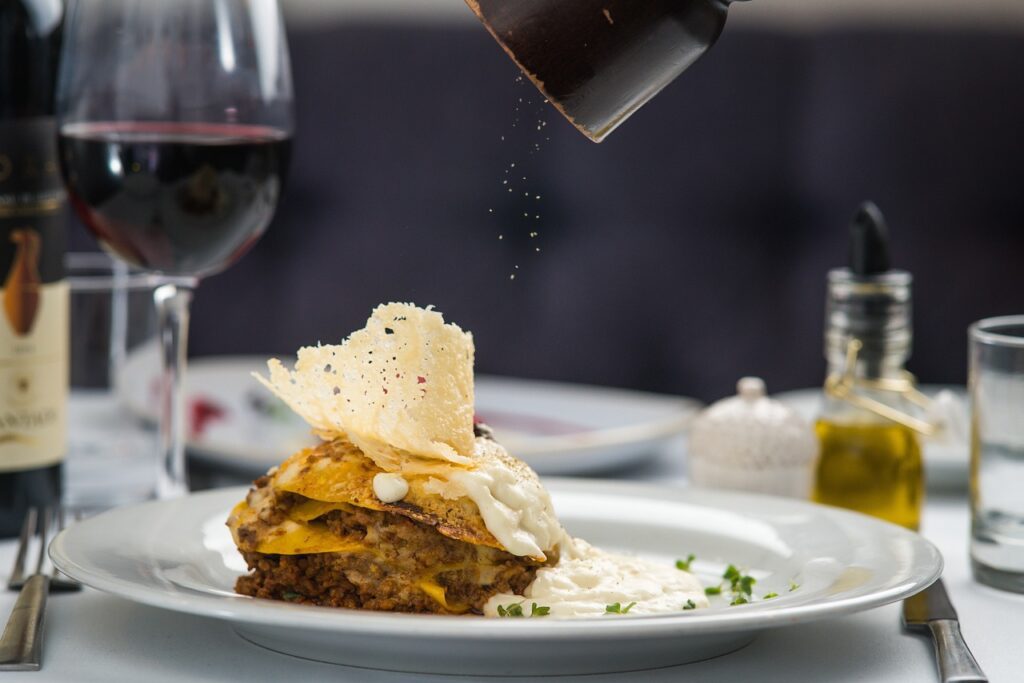
Final Thoughts
Over the last few weeks, I’ve shared quite a bit about Barcelona. It started with a simple guide, then moved on to sights, seasons, food, and how to plan the kind of trip that doesn’t burn you out. Now we’re here.
If you’ve made it through this post — or followed along from the start — I hope it’s helped you shape your own barcelona travel plans in a way that feels clear and realistic.
I wanted this post to bring it all together. Not just to repeat what’s already out there, but to simplify it. I’ve been that person with ten tabs open, not knowing where to start. This guide was meant to be the opposite of that — one long, useful place to figure it out.
These tips aren’t perfect. But they’re practical. The kind of advice I wish someone had given me the first time I visited. What’s worth doing. What you can skip. And what you shouldn’t stress over.
If this is your first time here, you’ll find more in the other posts — each one goes deeper into a part of the trip: neighborhoods, food, museums, what to expect in different seasons. All of it’s linked throughout this guide.
And if you’ve read those already, then you probably know what I mean when I say this city is best when you stop trying to see it all.
Barcelona travel is better when you take your time. When you leave space. When you miss a few things — and find others instead.
Thanks for reading. Safe travels if you’re heading there soon. And if you come across something I forgot to mention… that’s just another reason to go back.
FAQ – Barcelona Travel
Is it okay to visit Barcelona now?
Yes. Everything works. The metro, shops, cafés — no problems. Just check local news if there’s a strike or event during your trip.
Do and don’ts of Barcelona?
Do:
Use the metro. Eat local. Keep an eye on your phone.
Don’t:
Eat on La Rambla. Leave bags loose. Expect English everywhere.
How many days in Barcelona do you need?
Five days is a good plan. Enough to see things without rushing. Three is possible, but tight. Seven gives you room to wander.
What is the best month to visit Barcelona?
May, June, September. Not too hot, not too packed. Prices are better. November works too — slower, cheaper, fewer people.
What to eat in Barcelona?
Tomato bread. Pintxos. Simple grilled stuff. Local bars often do it better than restaurants. Try the markets too — cheap and fresh.
How much is a train from Barcelona to Madrid?
Fast train takes 2.5 hours. If you book early, it’s cheap. Wait too long, it’s not. Check Renfe’s site and compare.
